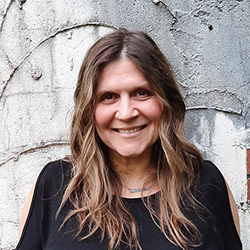
By Jessica Kirby, Editor
Leadership used to mean one thing: the boss speaks and everyone else follows directions. The hierarchy was a steep triangle or a straight line and everyone knew their place within that shape. Of course, that is no longer the case, and group work, collaboration, and mentor/mentee relationships are all the rage. The way our leaders operate has changed, too. They connect, consult, do the heavy lifting, share experiences, accept feedback, and admit mistakes. They are decisive, assertive, and strong-willed, and they are also cautious, analytical, soft spoken, and observant. They have different responsibilities. Sure, leaders still run companies, manage teams, and head up departments, but they also work on the tools, answer the phones, deliver the materials, and fabricate products. Leadership is everywhere, because leadership is a state of being. In fact, there are strong theories that everyone has the capacity to lead—they just need to find their style, their flow, and the cause that inspires them.
This issue showcases many examples of excellent leadership, starting with our cover story on MacDonald-Miller Facility Solutions’ epic project: the Summit Building at Seattle Convention Center. This was the company’s largest single-building project and one of the most complex it has completed. When a company breaks new ground, pushing its limits and expanding to new areas and expertise, it requires leadership—not just in the management arena, but also in the ability to accept new challenges, assist others in pushing the boundaries of what is possible, and in being forthcoming in one’s ideas and solutions. Check out how MacDonald-Miller mastered leadership on this flagship project on page 12.
When SMACNA-Western Washington Executive Vice President Julie Muller saw the limitations women face when returning to the construction site as nursing mothers, she knew she had to help. She recognized the inequality that exists when a tradeswoman has to go to her car and put sheets over the windows to pump breast milk, compared with women in office jobs who can take care of business in private, specially designated areas. She acted. Seeing lactation pods in an airport, she envisioned outdoor-suitable, mobile units that would work on construction sites, found a manufacturer, and partnered with the SMACNA-Western Washington and Local 66 Women’s Committees to get the pods approved and out for use. If that isn’t leadership, we don’t know what is. Learn more on page 8.
Speaking of filling a need, it is no secret that the labor shortage is a big issue across North America. As the skilled labor pool shrinks, retirement grows, and the next generation has more options, the trades struggle to fill seats. The Bay Area and Western Washington SMACNA chapters decided the only way to make a tangible impact was to create a program that checked all the boxes: high quality, creative, run by professionals, targeting students not quite out of high school or recently graduated, and oh so much fun. The result? Heavy Metal Summer Experience, an eight-week, hands-on trade sampler for 15-19-year-olds that has doubled in capacity year over year since it started. Wondering how you can host a workshop or why you should? Find out on page 10.
Stephane McShane is no stranger to the sheet metal industry. On page 16 she shares her wisdom and expertise on what it takes to be a good leader at work and in life. She also tackles some misconceptions we have about leadership and what we can do to develop our own, unique skillsets, whether at the helm or in the rank and file of our activities and organizations.
What does leadership mean at your organization? Is the hierarchy a triangle? A straightline? A circle? How do you develop leadership in your teams and in your own life? Tell me about it at jessica.kirby@pointonemedia.com ■


